Both Madeira and the Azores are of volcanic origin, tiny tips of huge volcanoes rising from the Atlantic Ocean floor and sticking out of the waves.

The Azores are at the junction of the North American, Eurasian, and African plates. The island we’re on now, São Miguel, is the most volcanically active island in the Azores archipelago. Just looking at its elevation hillshade you can see the volcanoes that form it.

For many of us this is stuff we learned about in grade school and have had little reminder of since. When you explore islands.. you can’t help but think about this context at times. Today was one of those times!
We are currently staying just outside the rim of the huge round caldera (Caldeira das Sete Cidades) on the western tip of the island. After our relaxed morning routine, we drove up over the caldera rim (again, we actually drove through the same area the day before). After 10 minutes of fun-steep-curvy-road driving, we went from ocean views to the floor of the caldera looking across the lakes. A good time to take a moment and appreciate the history of this spot in the middle of the heart of millions of years of volcanic activity. Read here.
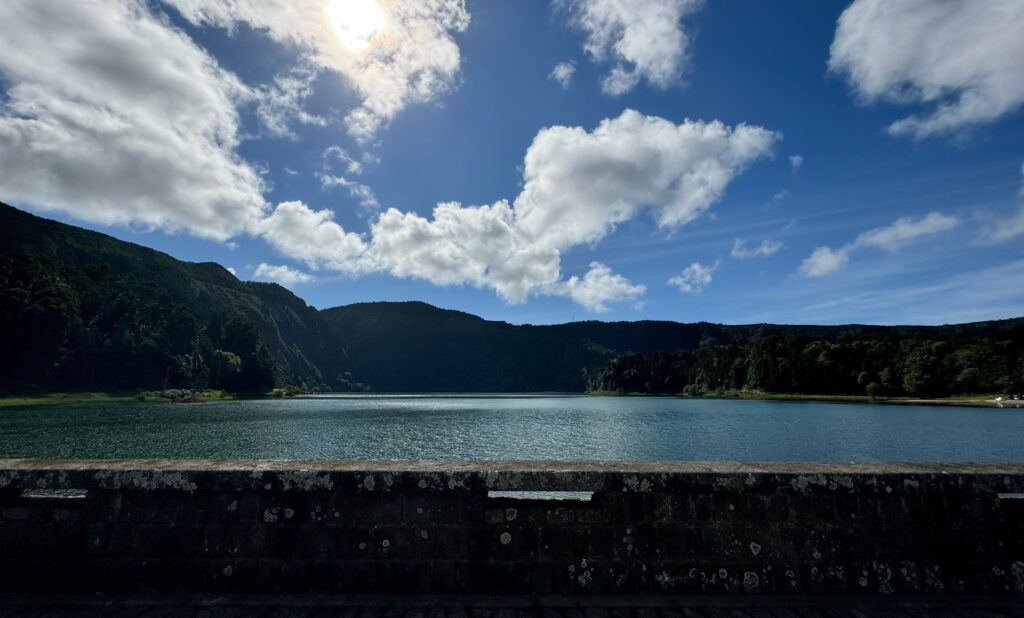
We drove up the eastern side of the caldera and around the rim to the southern side to a famous lookout, Miradouro da Vista do Rei. This has a spectacular view of the entire caldera.
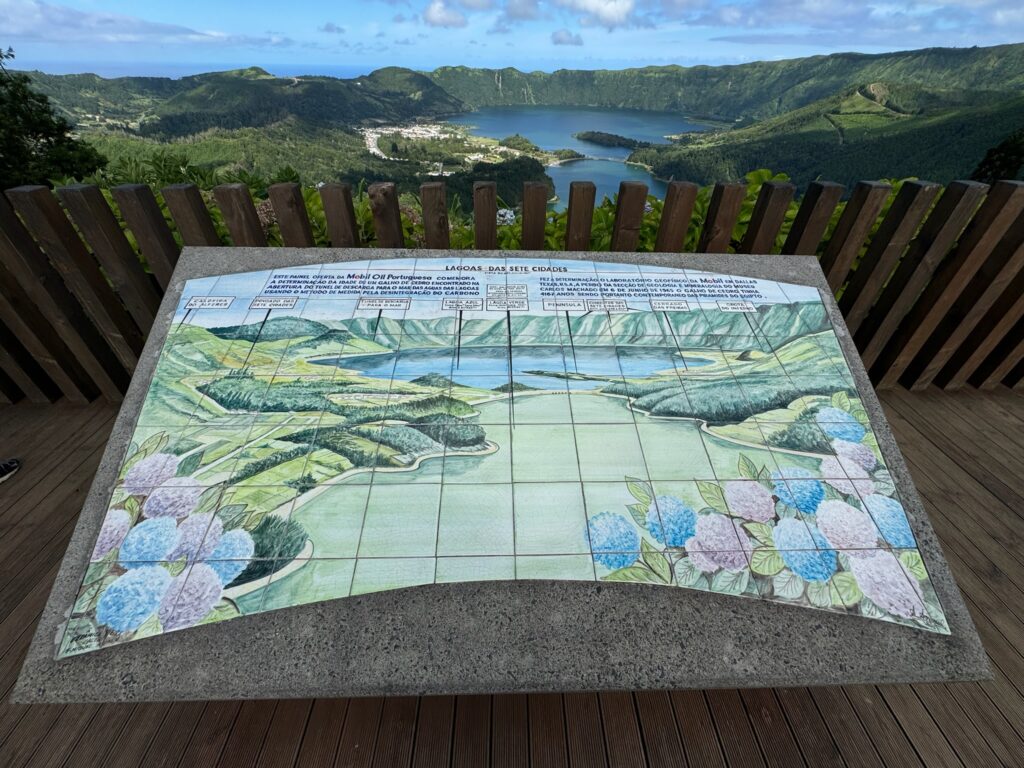
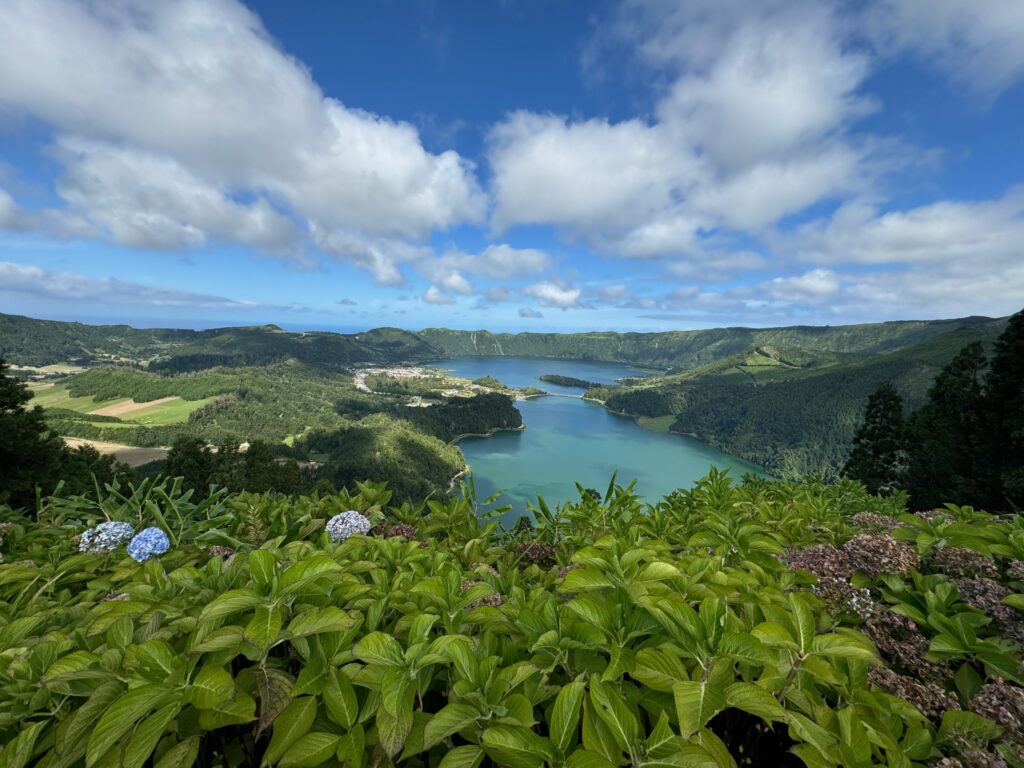
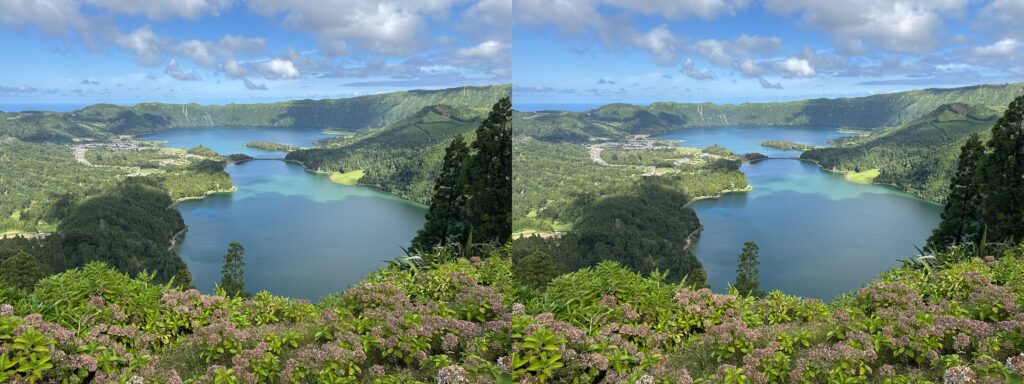
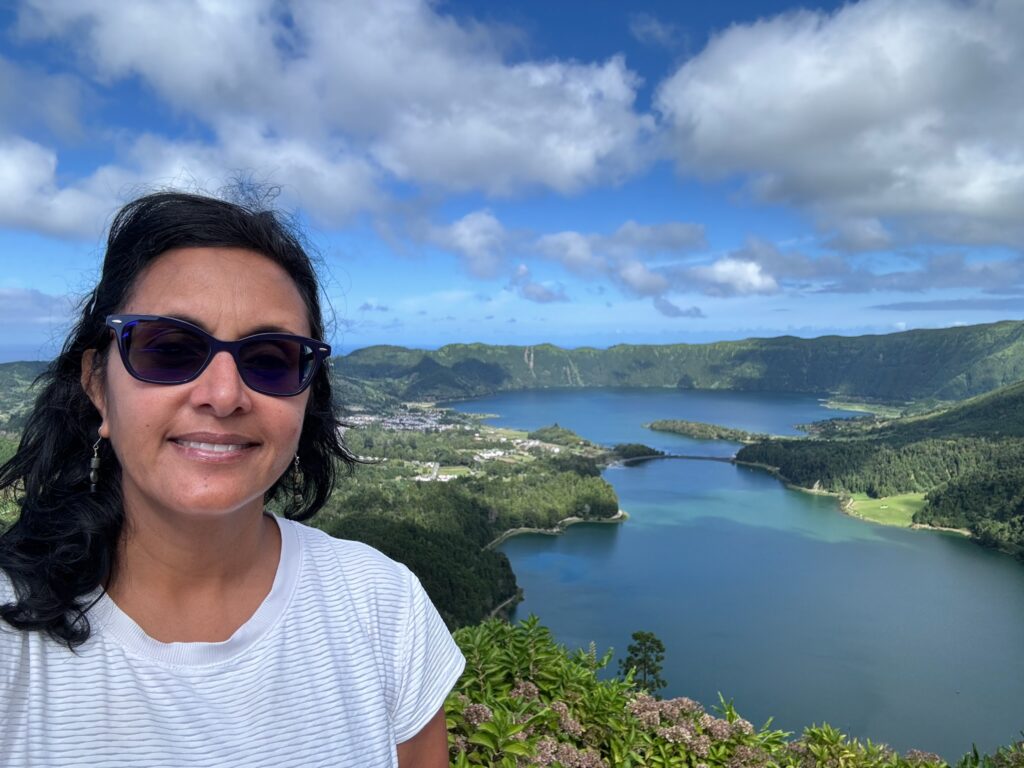
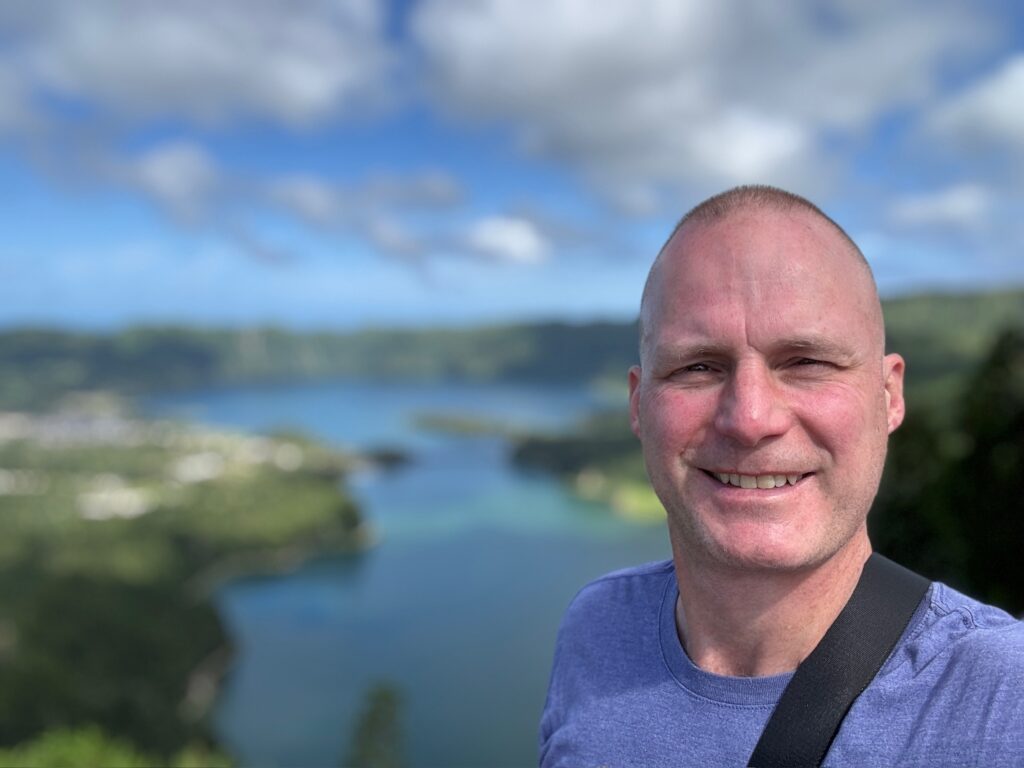
Unlike the other viewpoints around the caldera, this one has a massive abandoned hotel looming above it. I won’t tell its story (for that go here), but our impressions I’m sure were similar to most people’s at the site. Something like.. “Why is this abandoned? It’s a perfect site!”. As you can see, it is completely in disrepair, heavily vandalized, and graffiti-covered. It is absolutely huge, but because it was built in a sort of Asian style with garden tiers it actually sort of blends in.

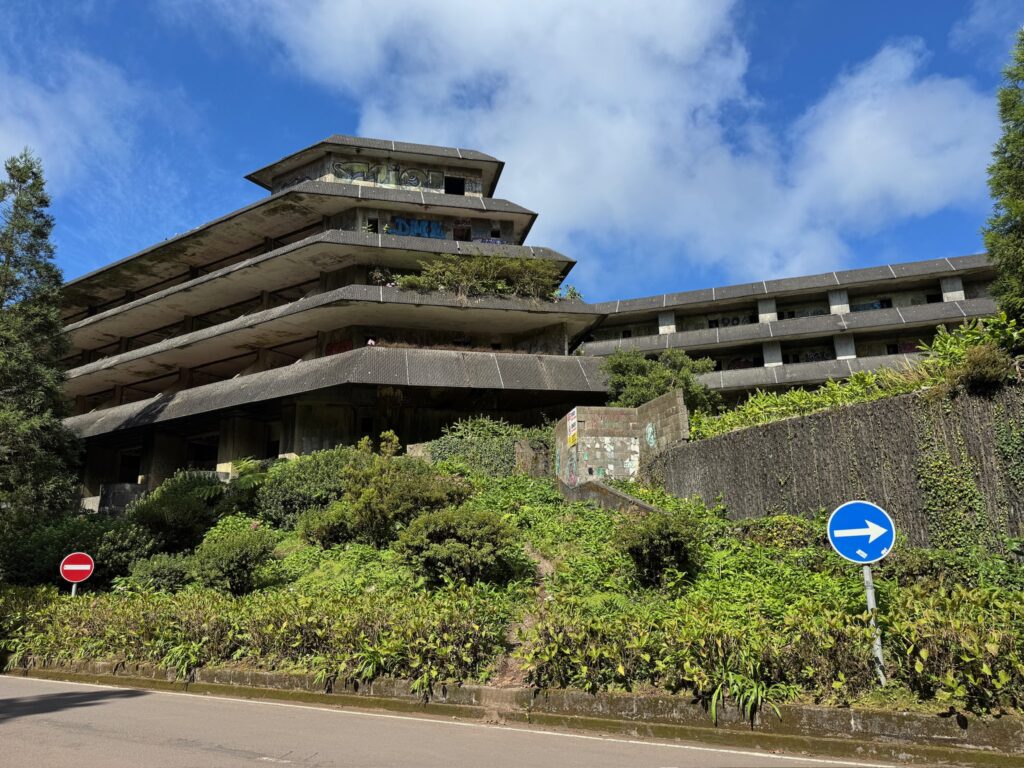
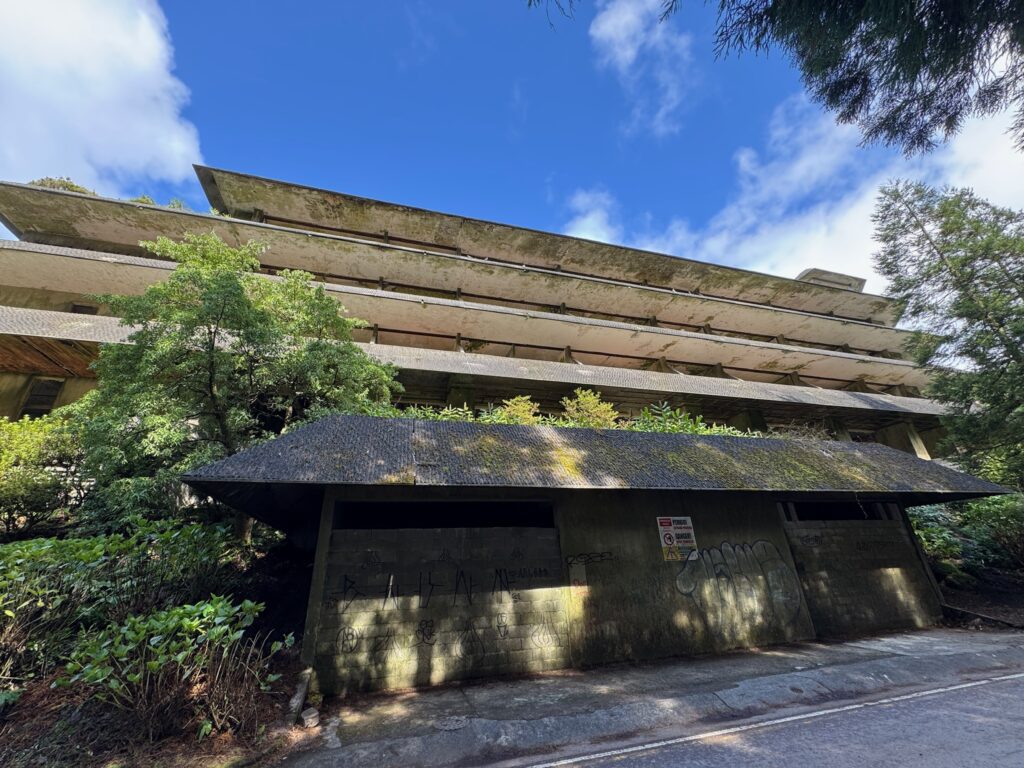
We then drove to the trailhead for an easy hike to the Boca da Inferno viewpoint up higher in the mountains. Somehow my instinct has been that the caldera itself, as a near vertical wall around the mouth of an ancient volcano(es), is the highest thing around. However it’s really just the visibly stunning lower part of a massif that rises another ~1000 feet higher to the east.
The hike starts at Lagoa Canaria, essentially “just” a mountain pond. The colors, especially in the water, are striking though.


The trail quickly emerges onto the slopes above the caldera. You approach the main viewpoint along the flank of a sheer drop-off.

We don’t usually post about strangers but.. this couple “earned” special note since we ended up walking near them most of the way to the viewpoint. She wore a shower curtain/wedding tablecloth and he wore slides with socks and a t-shirt. While this is an easy hike/walk that young kids do, this is not wise attire. I did take some pictures for them, I hope they made it back ok.
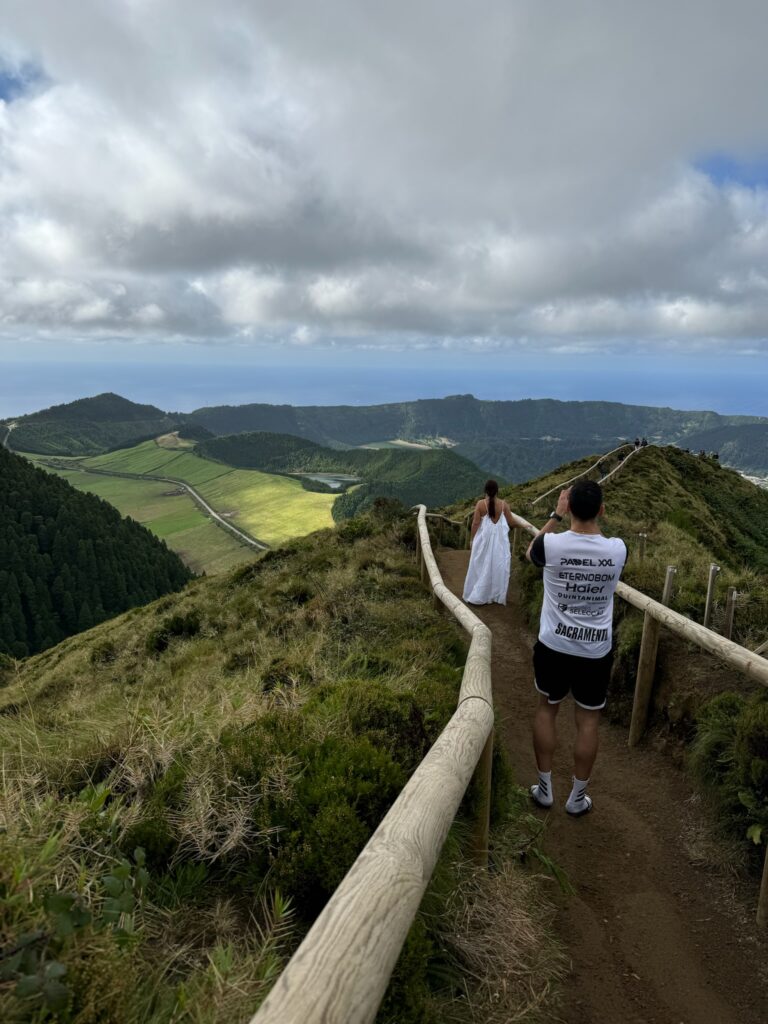
This is a busy spot, and well-earned. It has a ~325 degree view and feels like it hangs over the abyss.
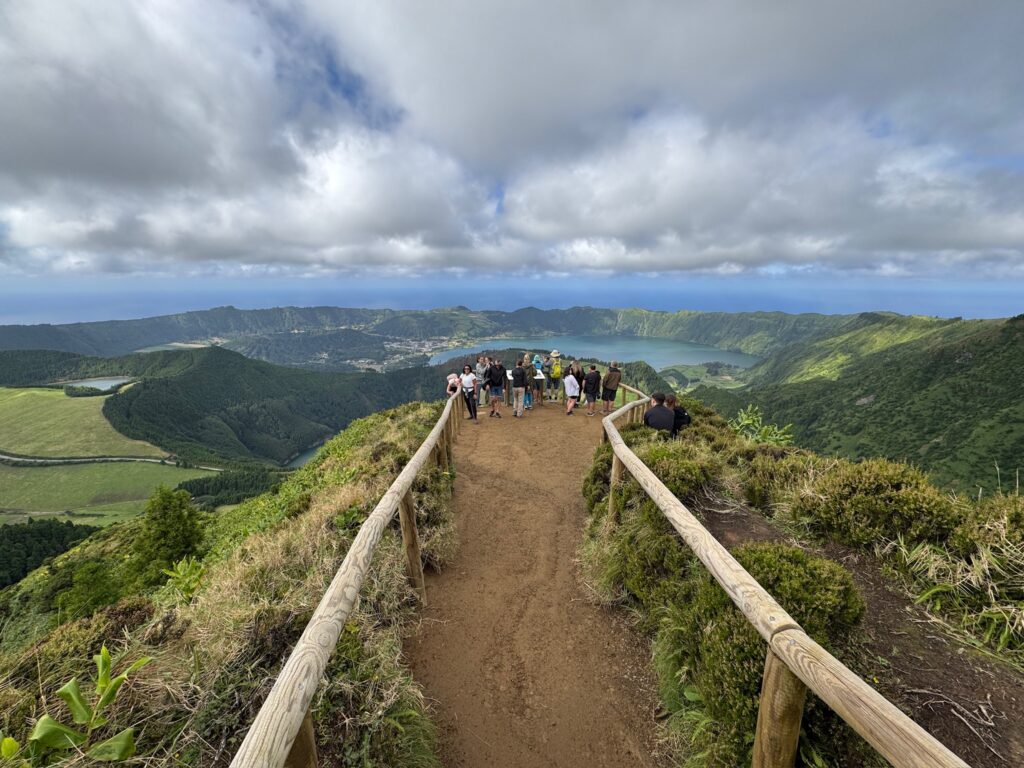
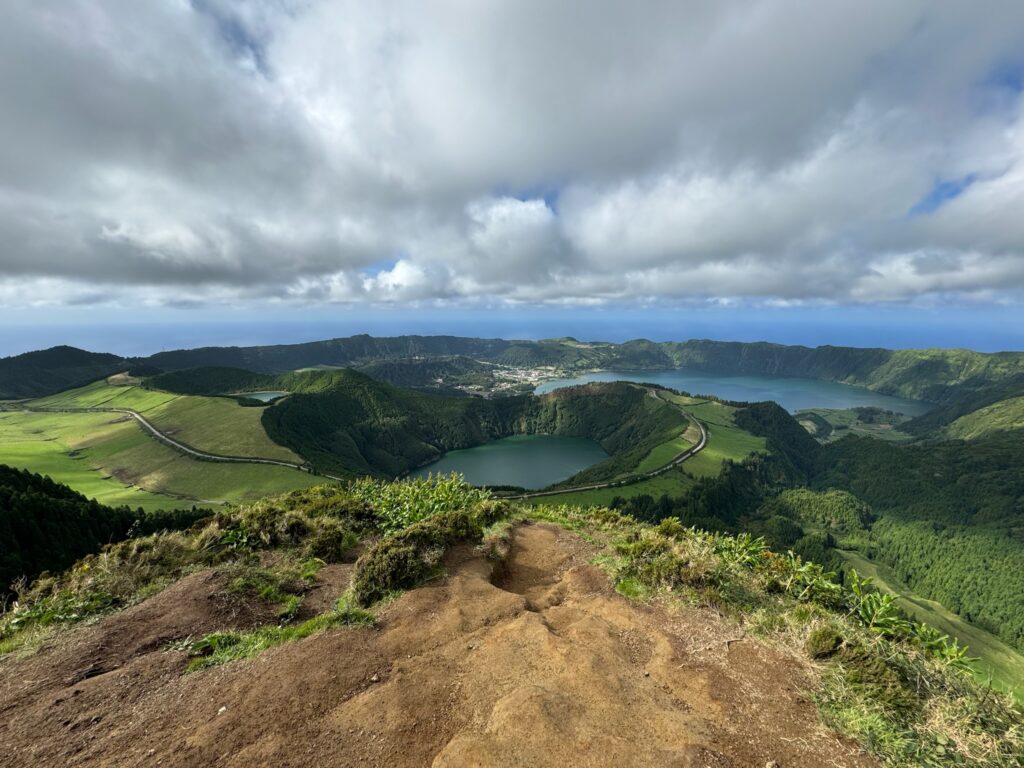
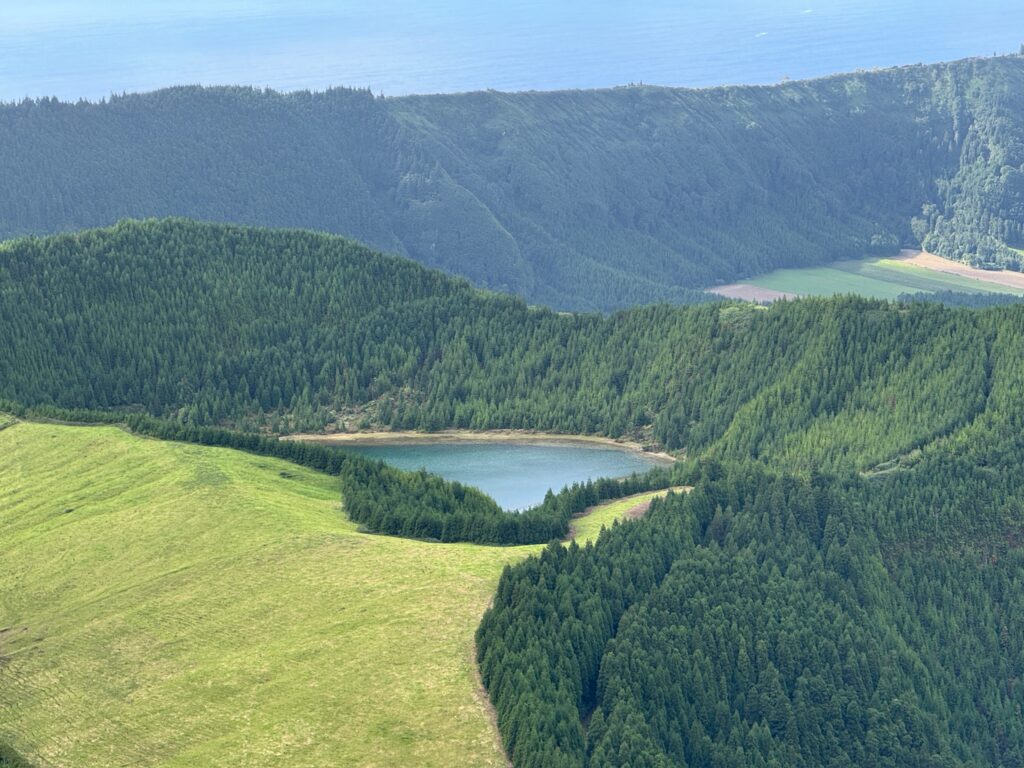
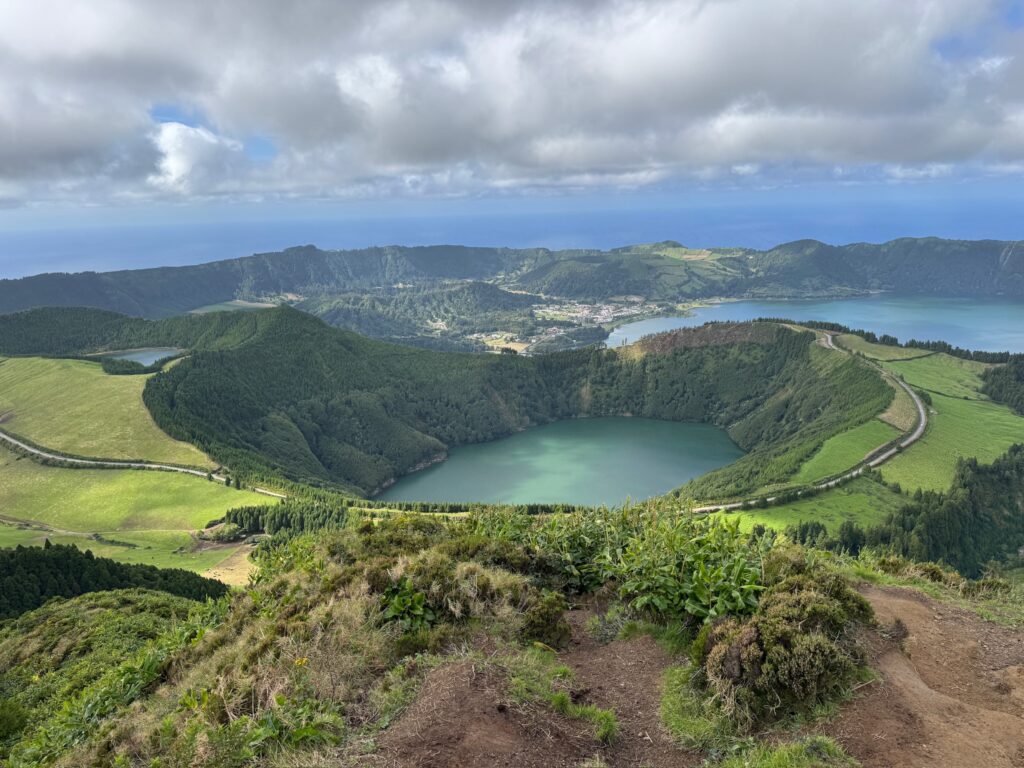
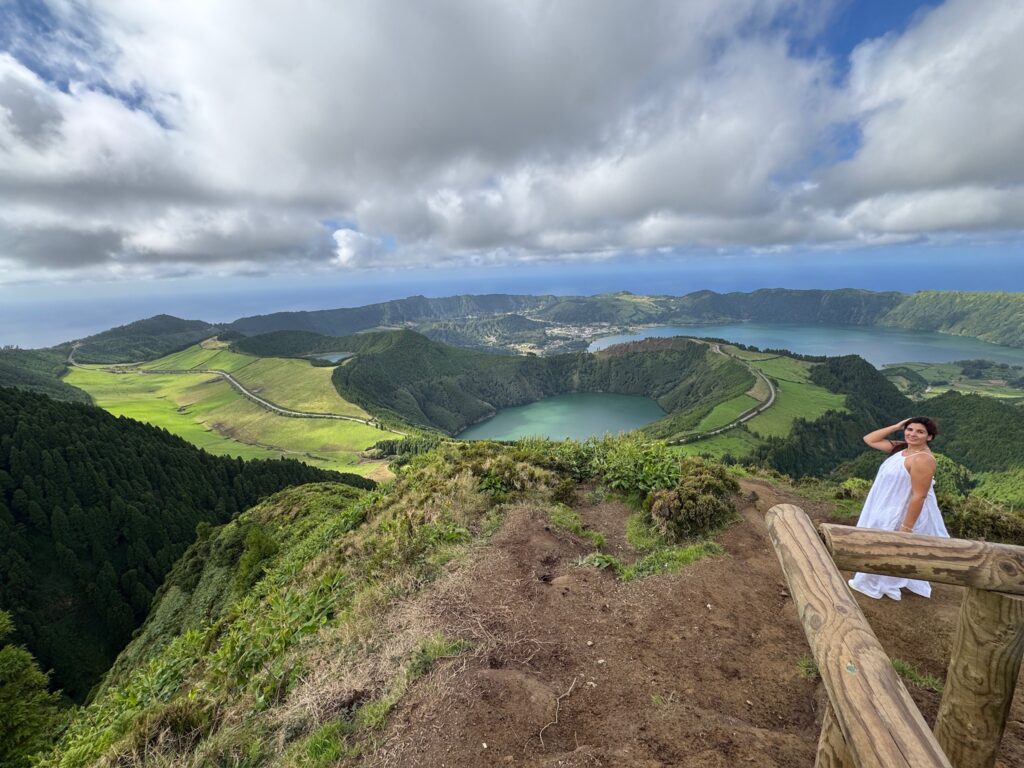
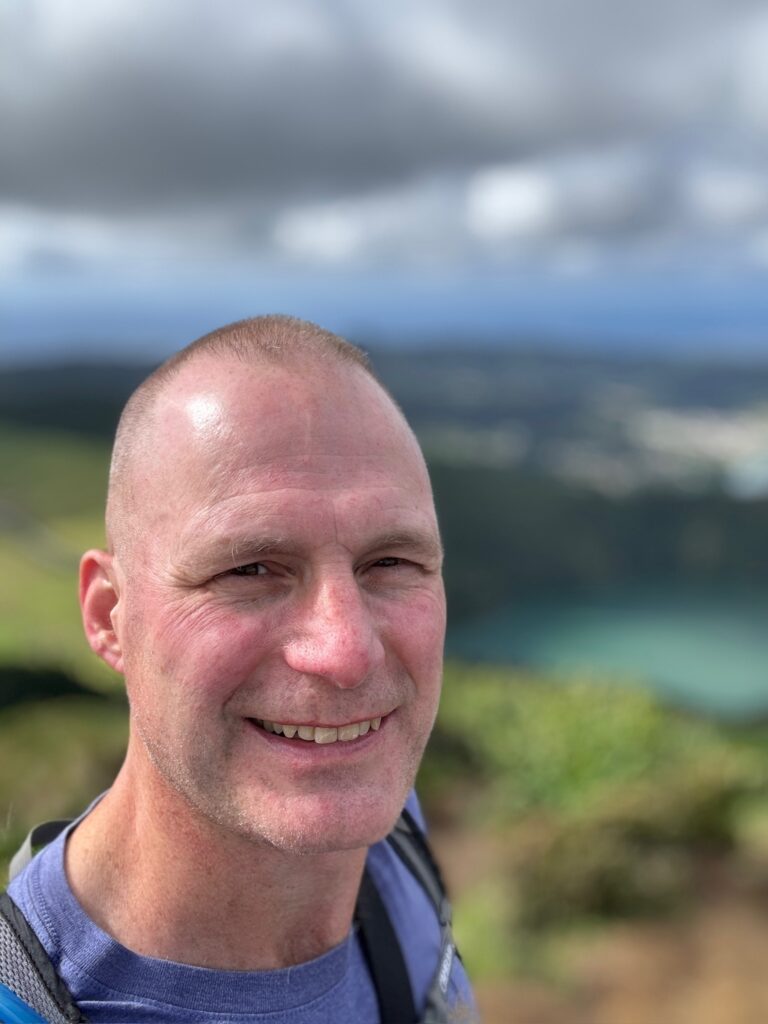

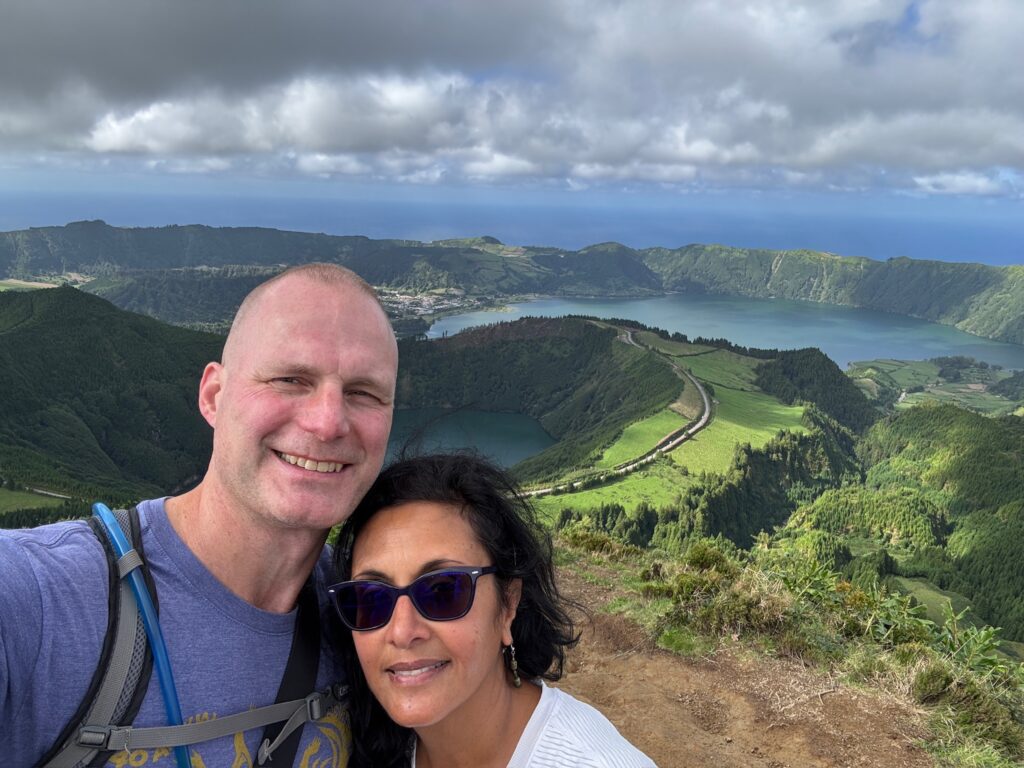
From the tip you can zoom into so many scenes from above.
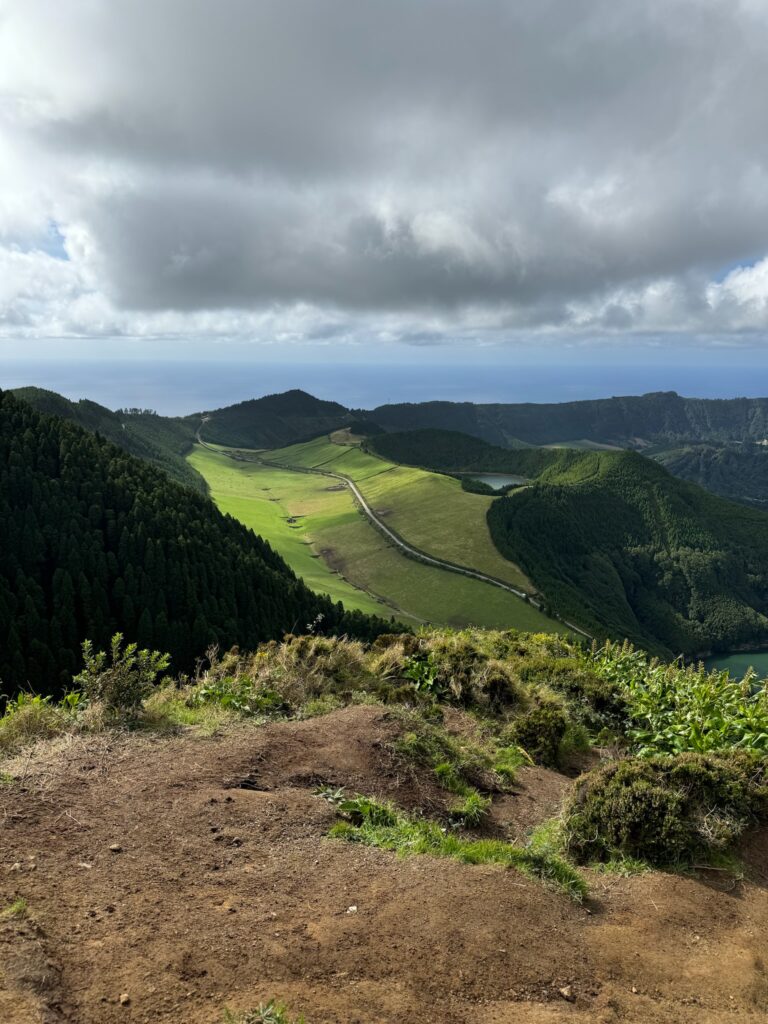

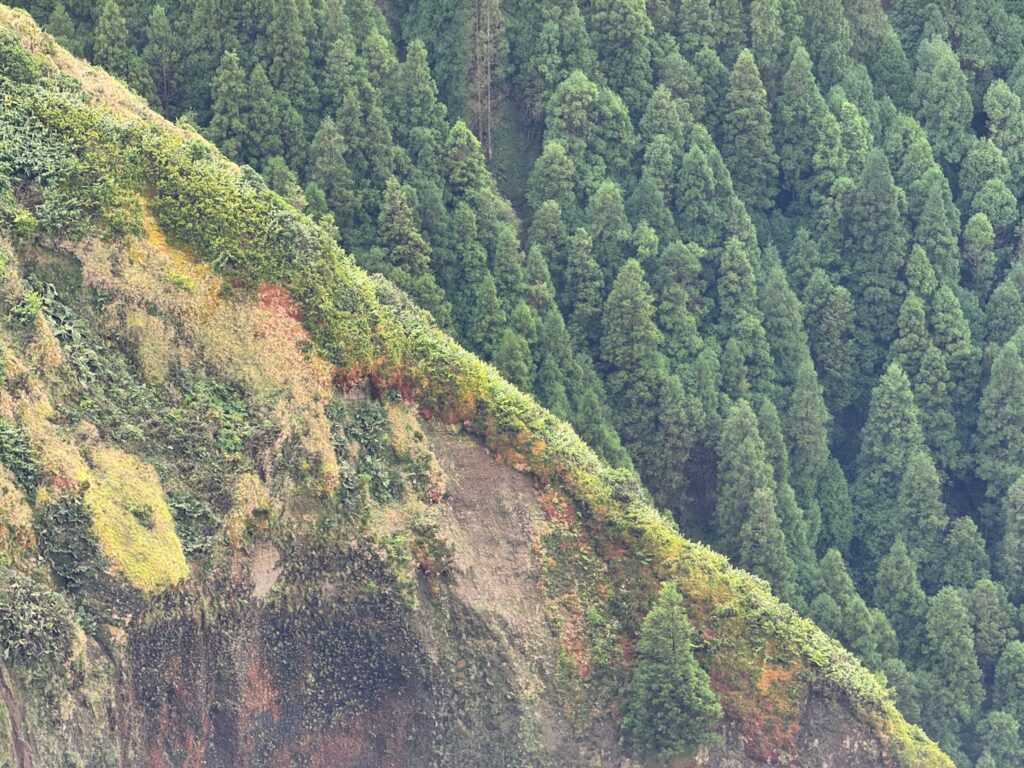
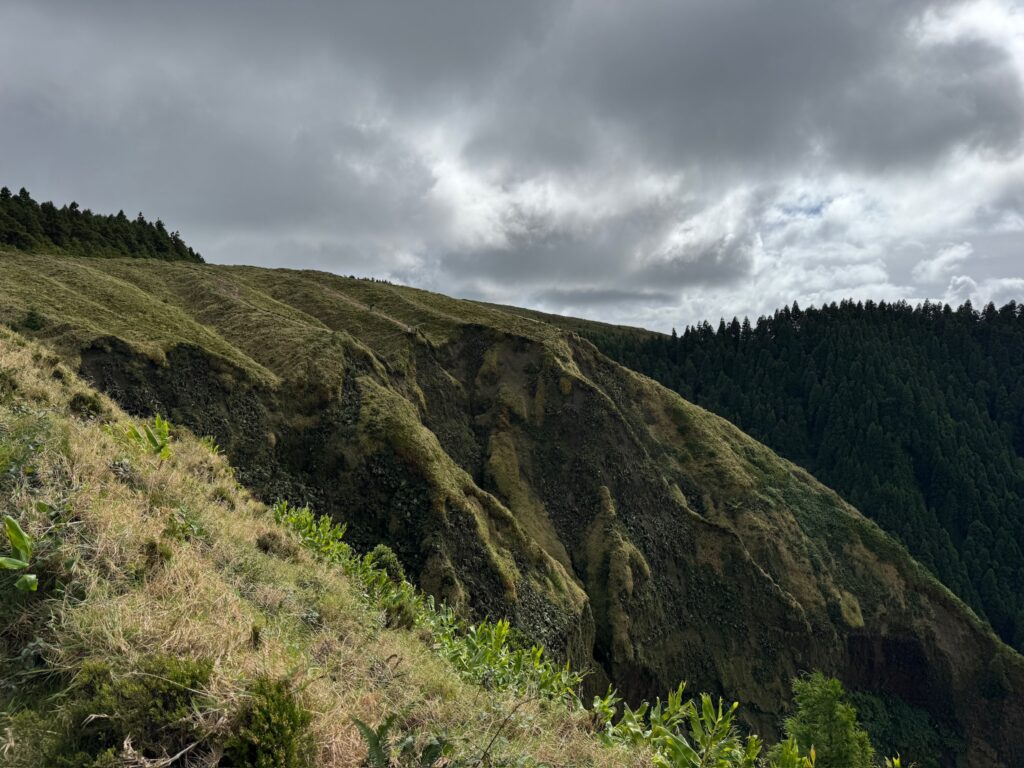
Our planned trail deviated from the tourist throngs thankfully, and followed the ridge.

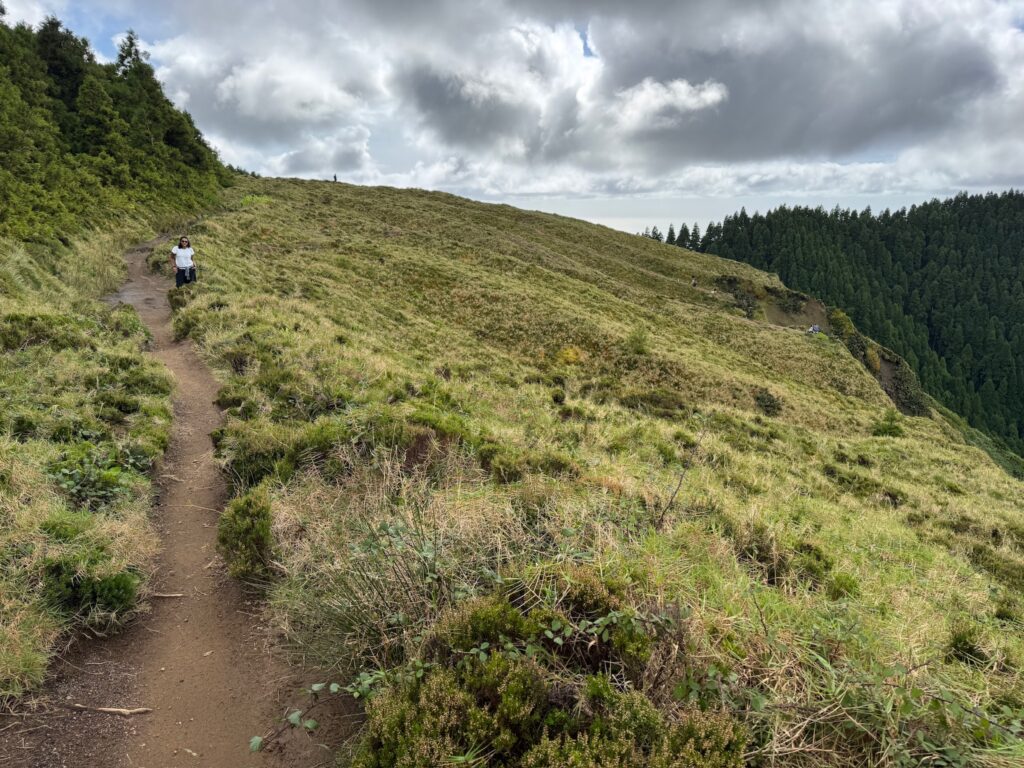
As you can see above “Where we’re headed next”, gullies and ridges have formed fingers that reach out to the edge of the drop-off. We went out to the tip of the longest one for lunch and pictures.

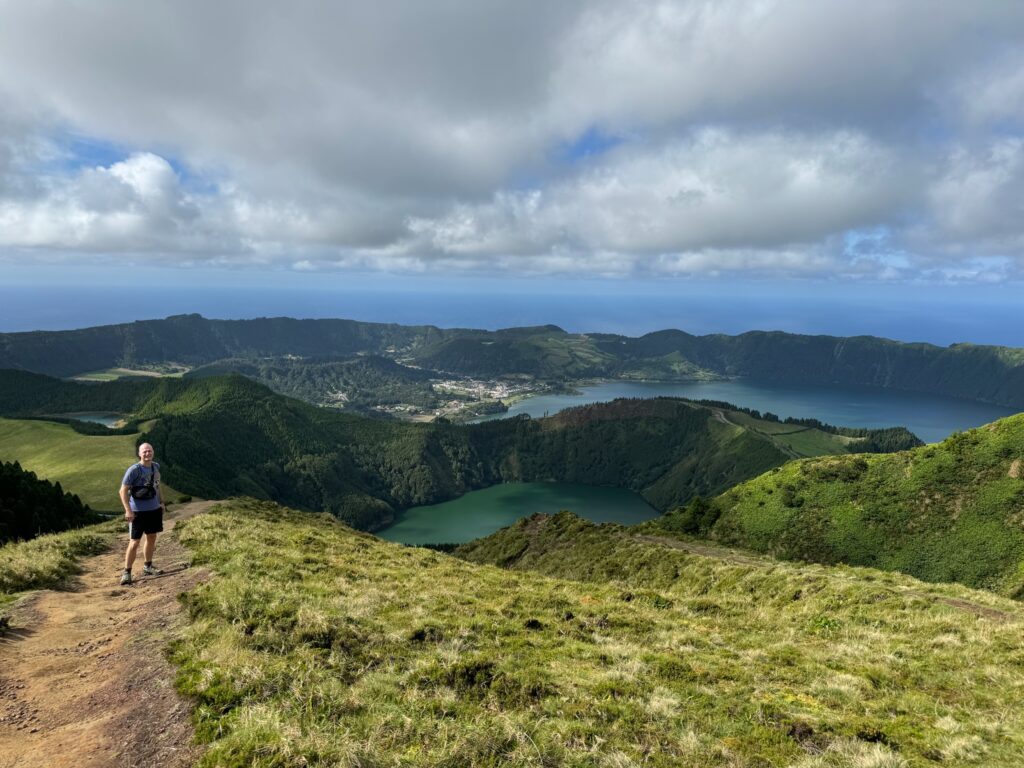
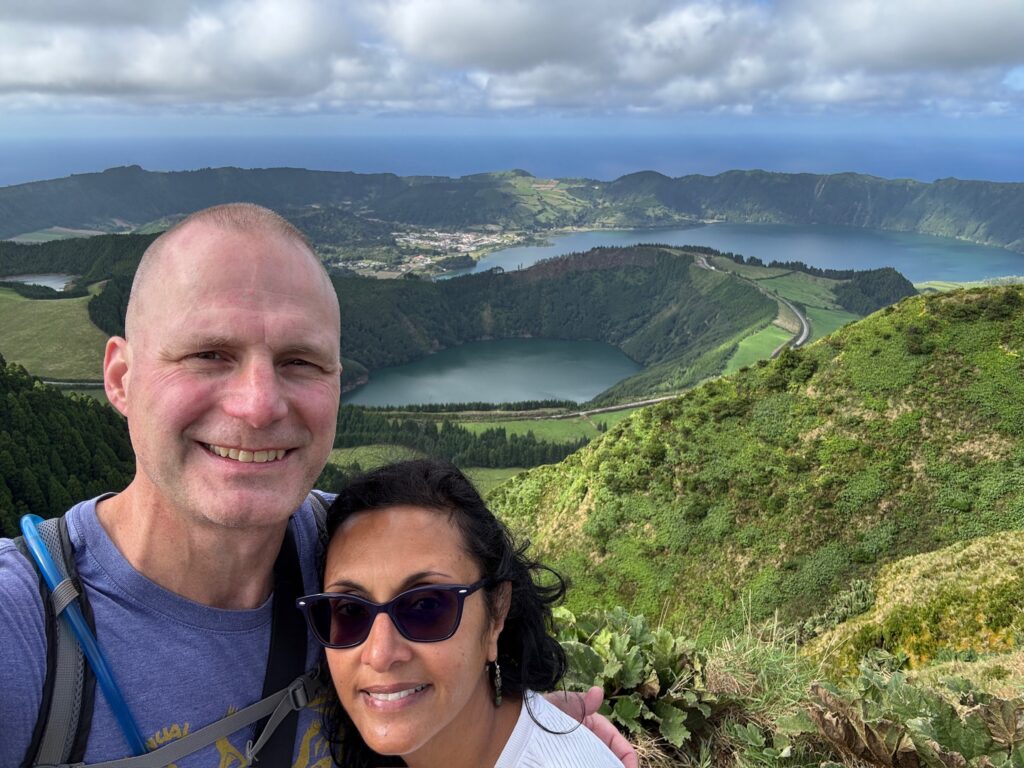
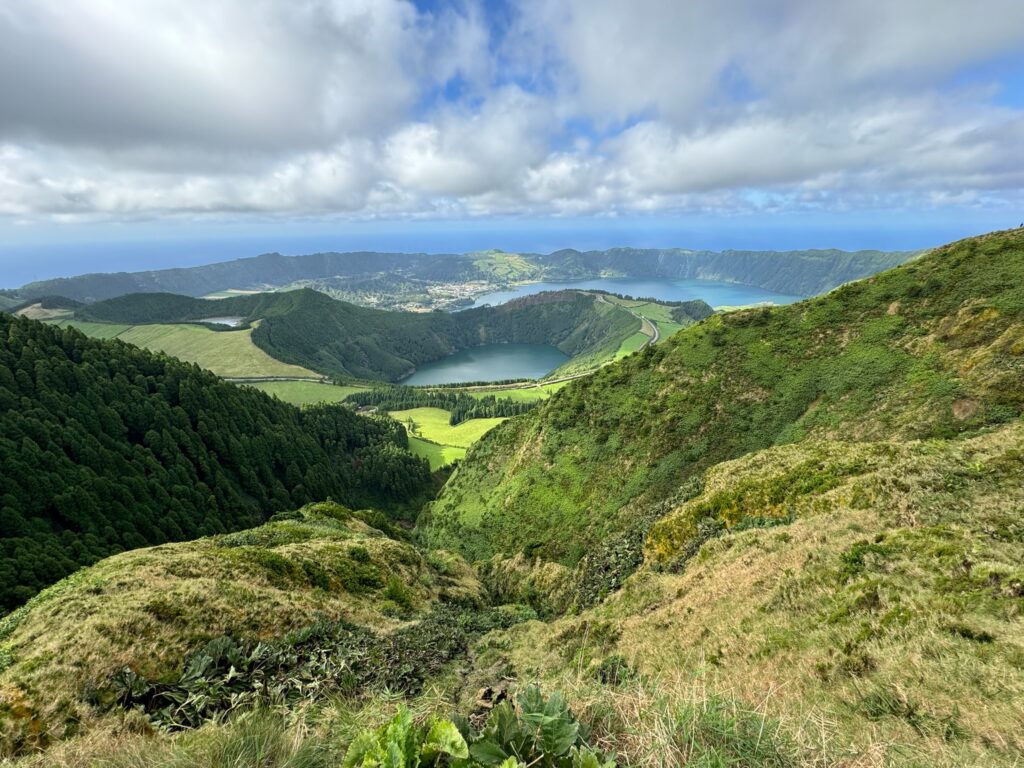
I know my finger makes an appearance in this 360 video but.. cropping it out removes too much good stuff!
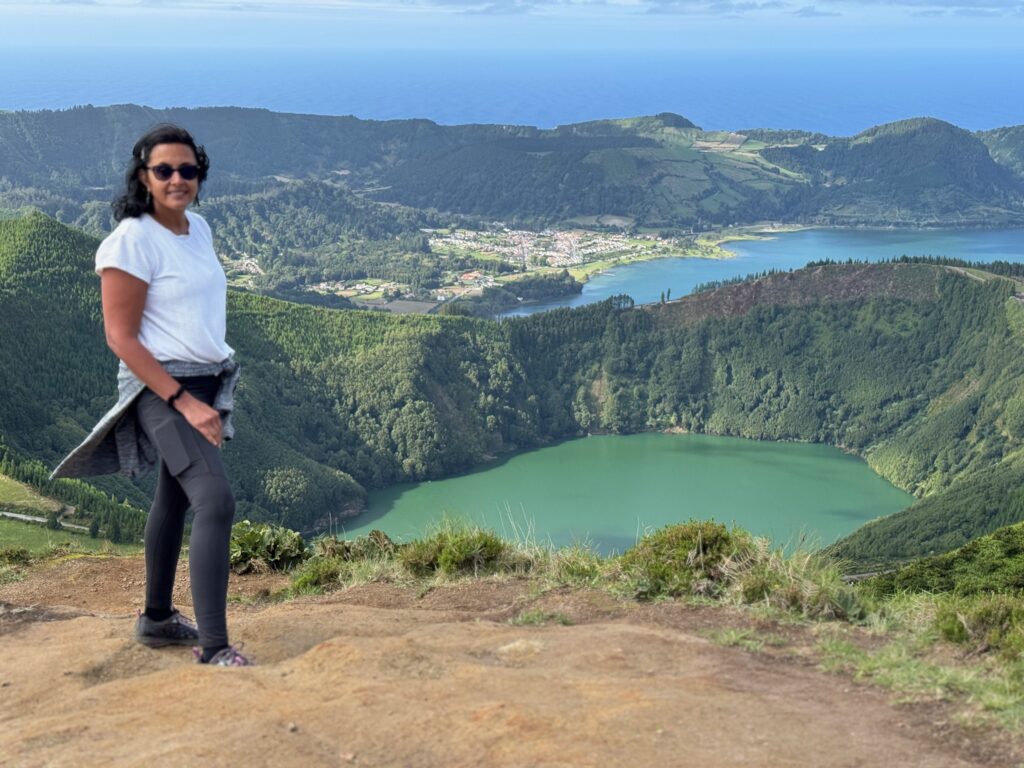
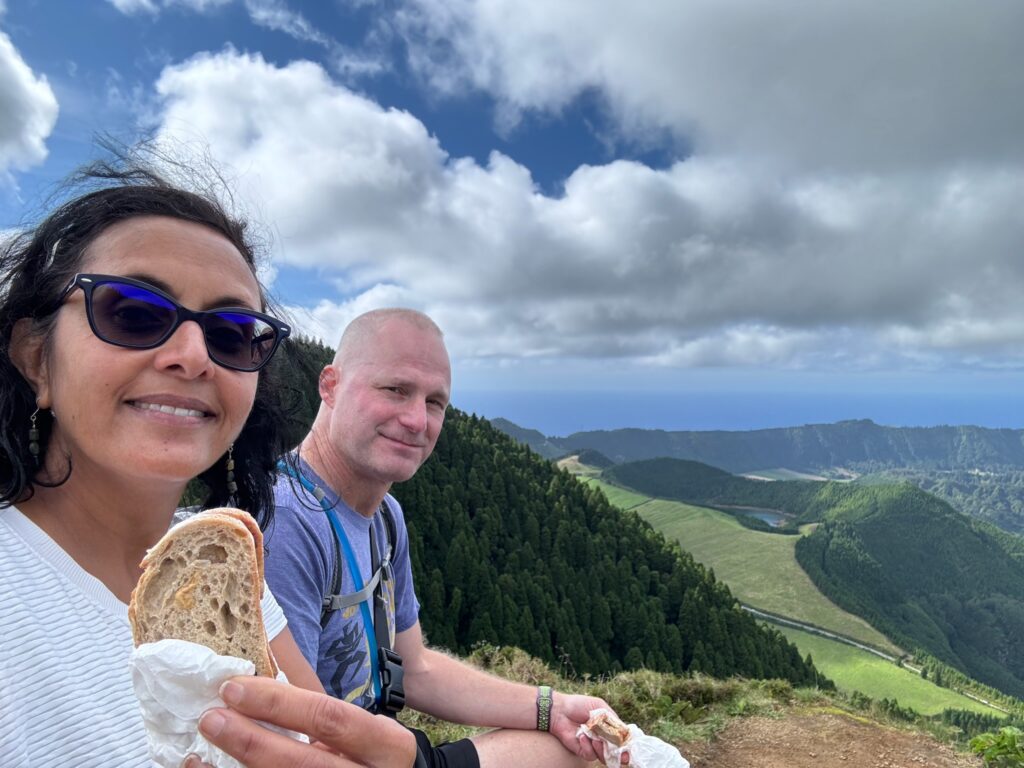
Trails around here are often lined with thorns of various types. Reminds me of new England. This one definitely was looking to draw blood.
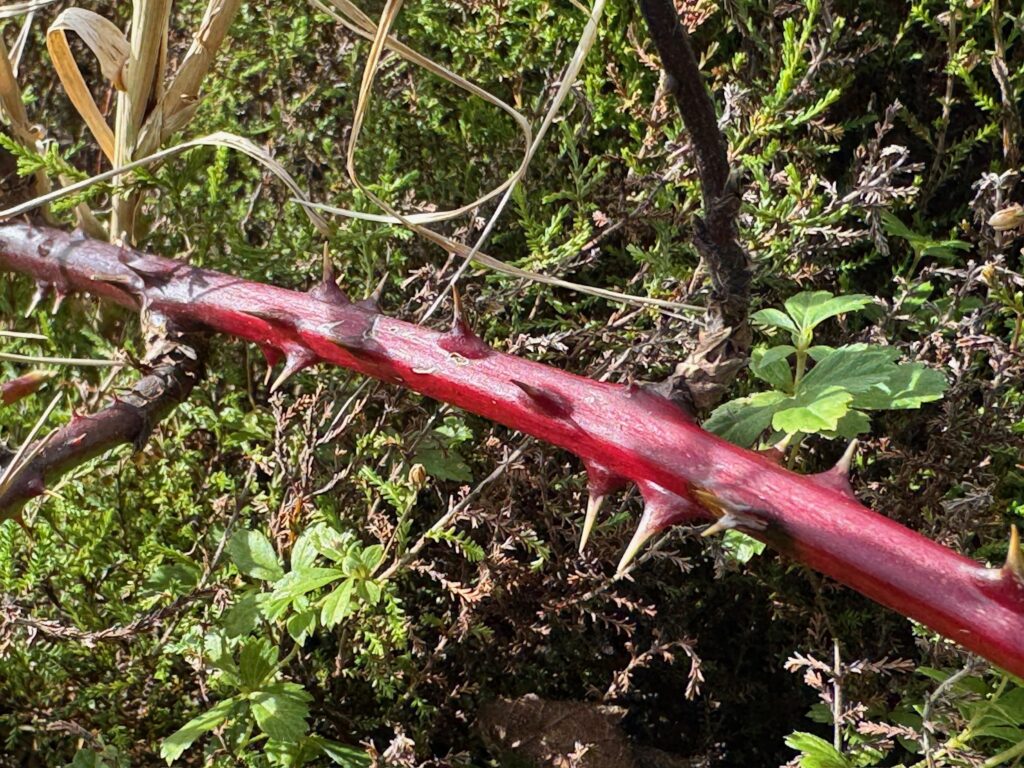
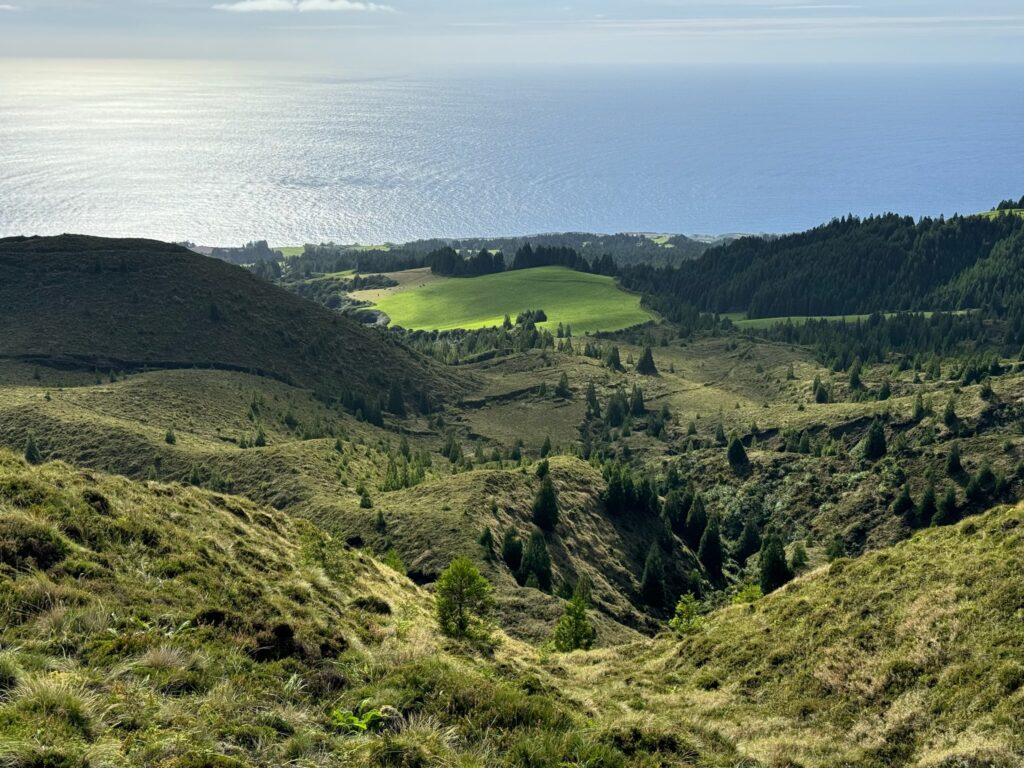
The trail gets heavily.. “gully-fied”.

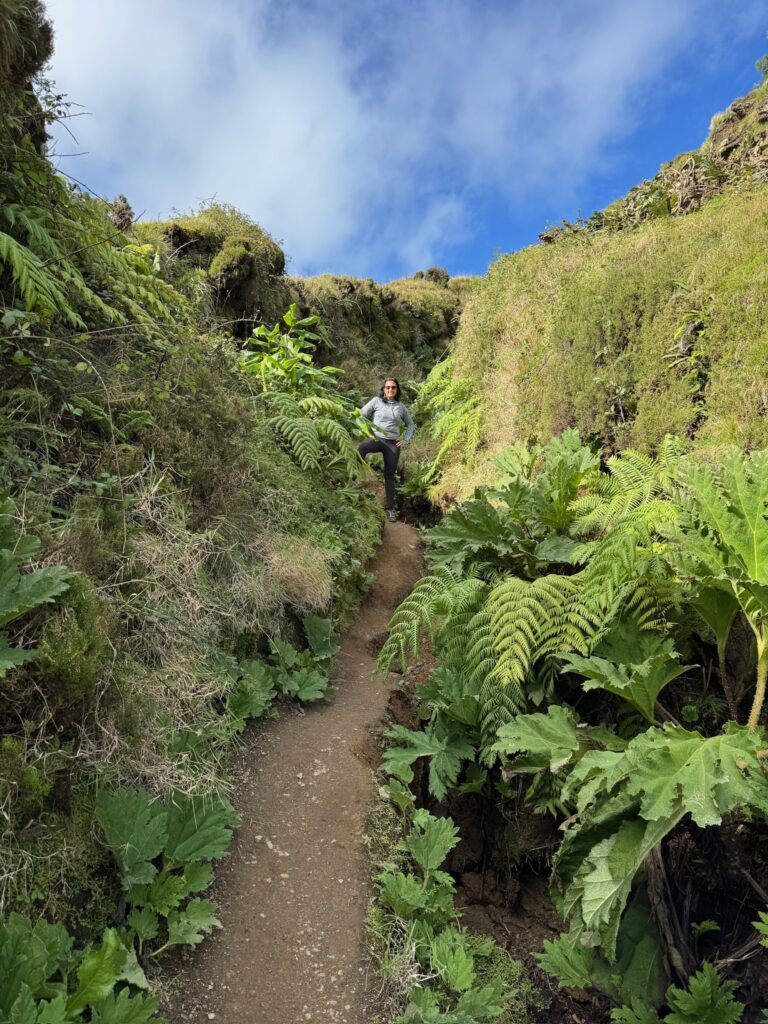
Once we returned to the car we made a quick stop at a nearby landmark, Wall of the Nine Windows. It’s another old aqueduct, but we’re not sure where “nine” comes in..
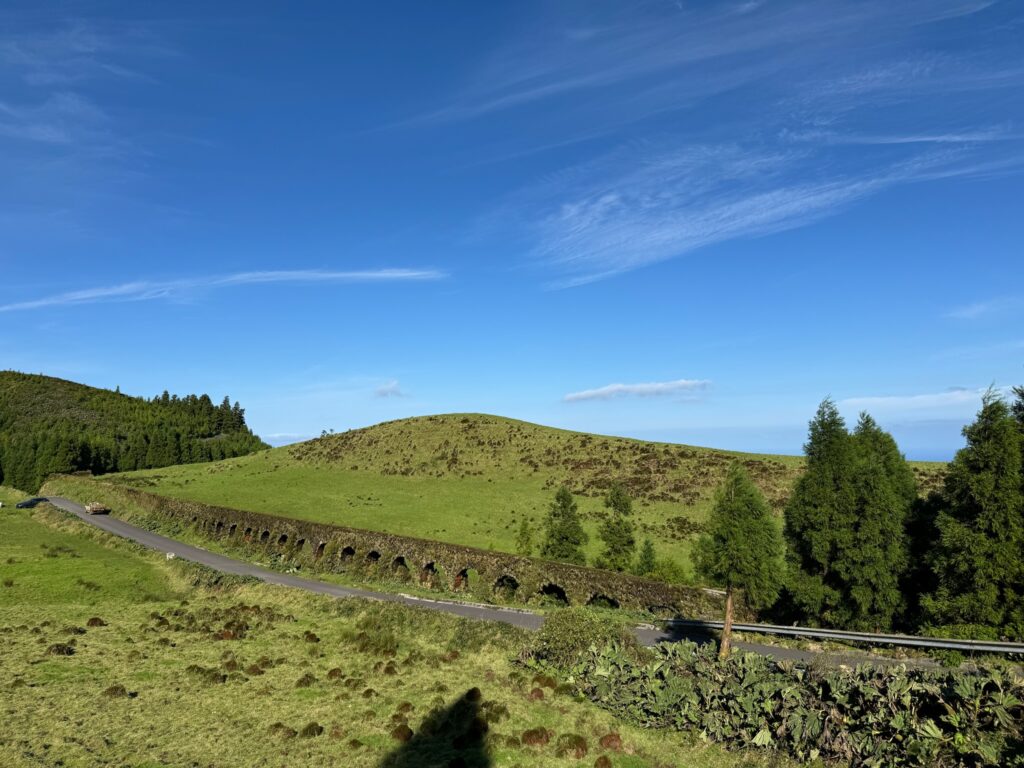
We headed back across the caldera, passing through the village of Sete Cidades itself. It was packed due to some sort of celebration so we stopped. The village, like so many, has a cute church at its center.
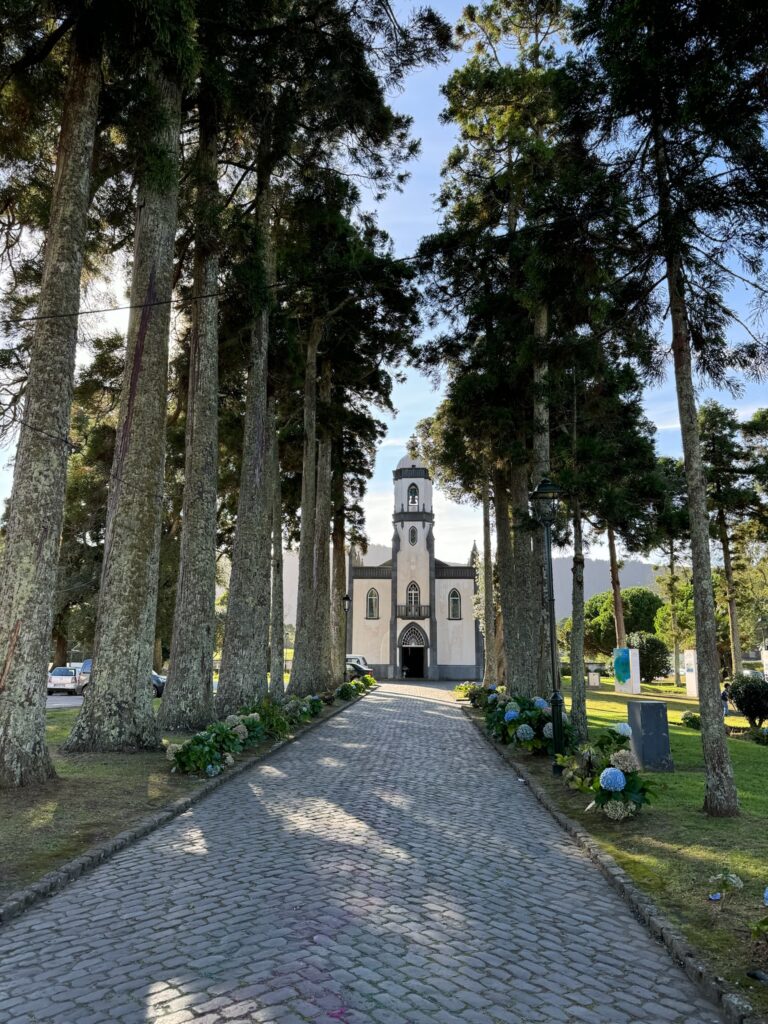
We.. still don’t know what we saw here. Some sort of harvest festival? One of the carts was filled with items that seemed like a rummage sale though. Regardless everybody was in good spirits and it was a nice mix of old and new. The sound you hear that’s a lot like a bad bagpipe is the rubbing of the huge brakes on the wheels of the carts. You can see as they go by (and in the zoomed in views that follow) that it’s configured so that the brakes are always on. We did see one where the brake was loose and the sounds were intermittent.. and the old fellow guiding the steers (?) was less in control.

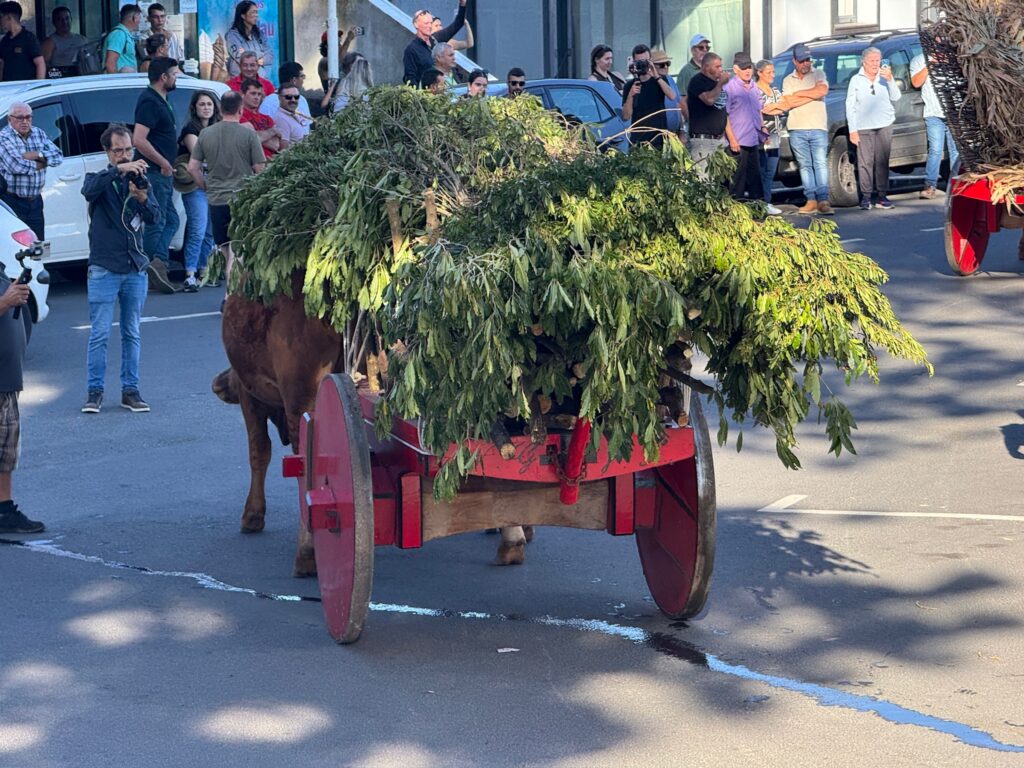

We next drove to Mosteiros, a coastal town 10 minutes up the coast from where we’re staying. It is known for its beautiful bluffs and natural tidal pools that people swim in. This is a different face of the volcanic origins of this area. The sand and rocks are dark black, much fresher than most of the mountainous bare rock we see. Rocks looks recently exploded and shattered as they emerge from the sea. The scene reminded me of the end of The Goonies.
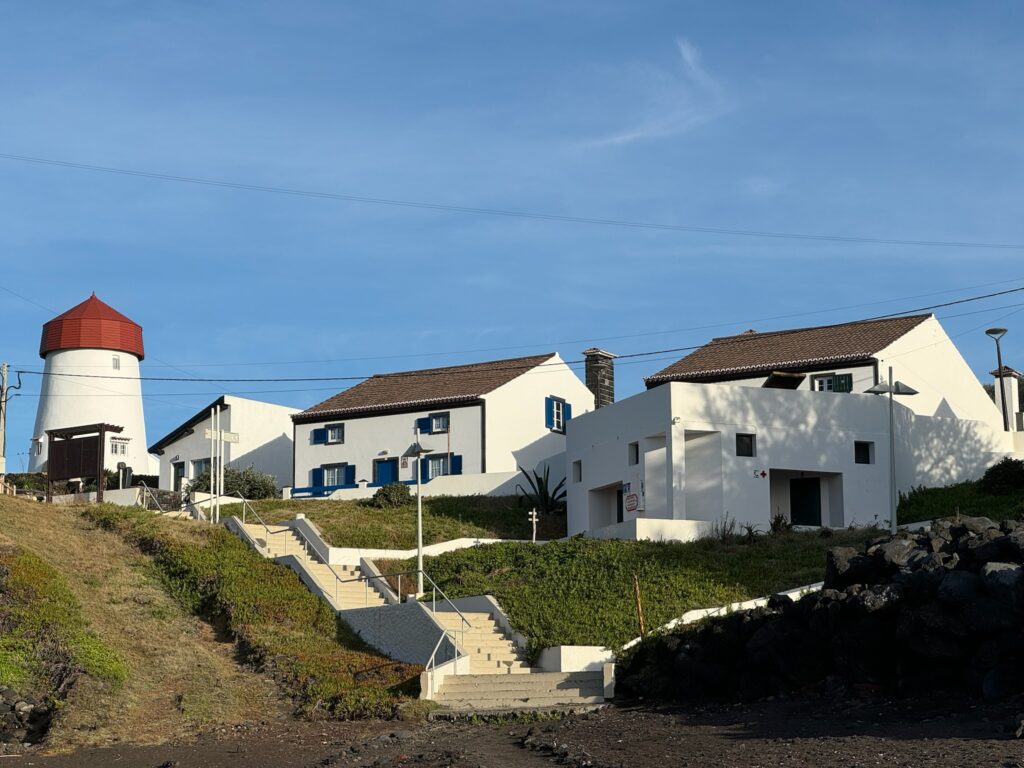
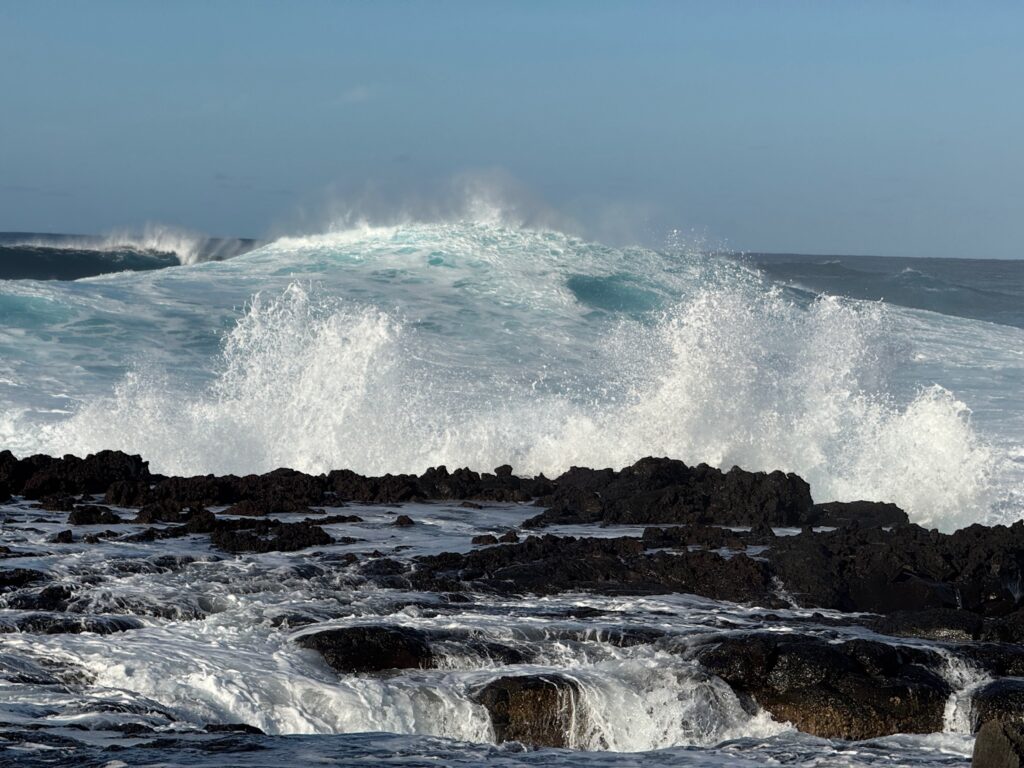
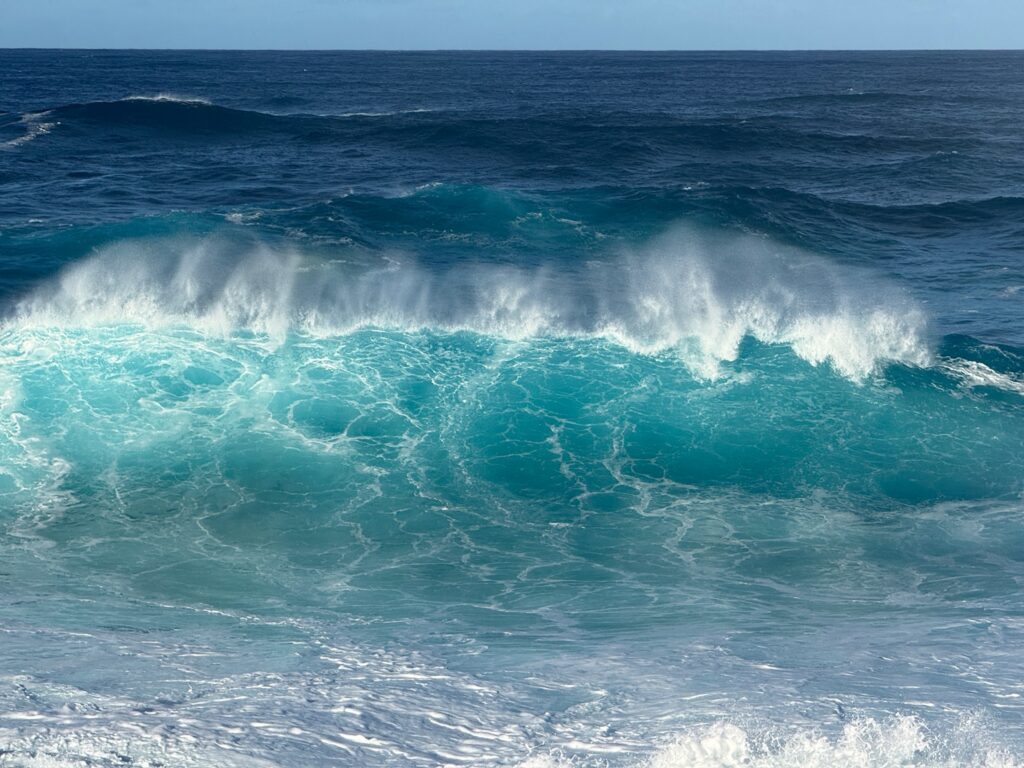
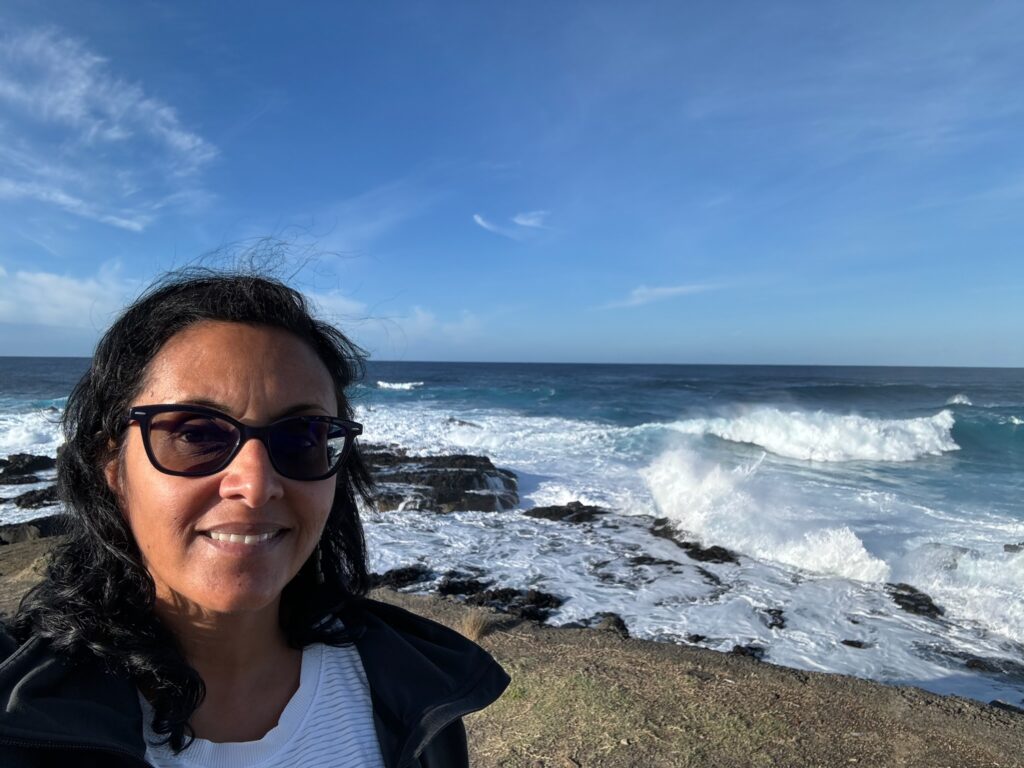
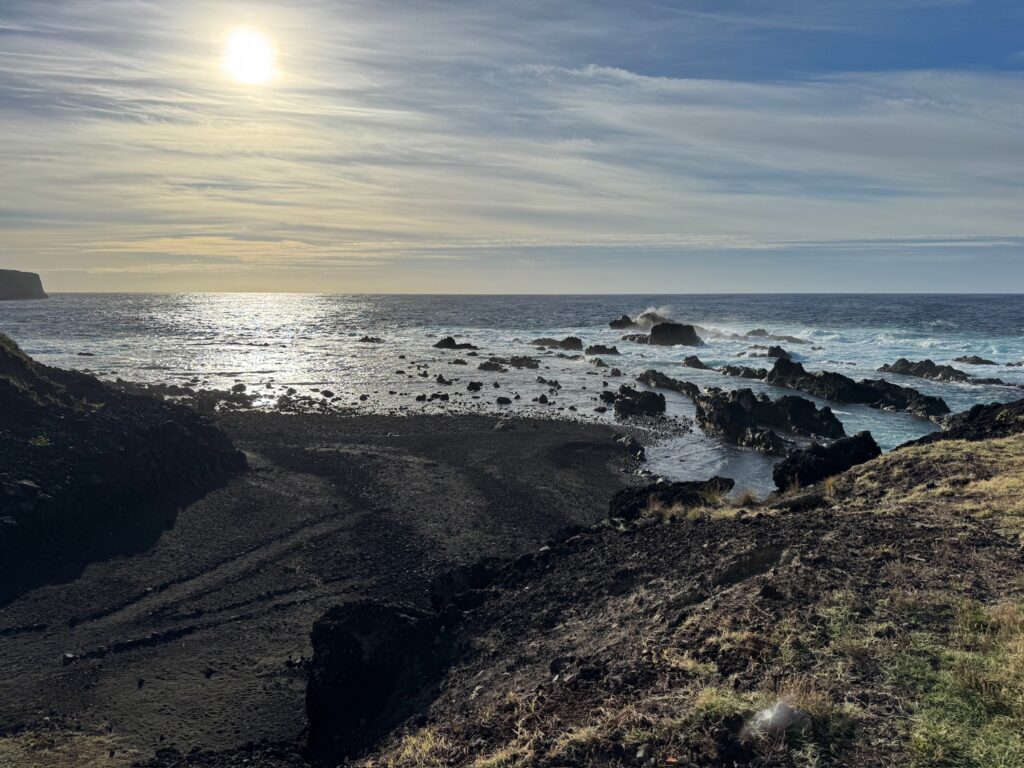

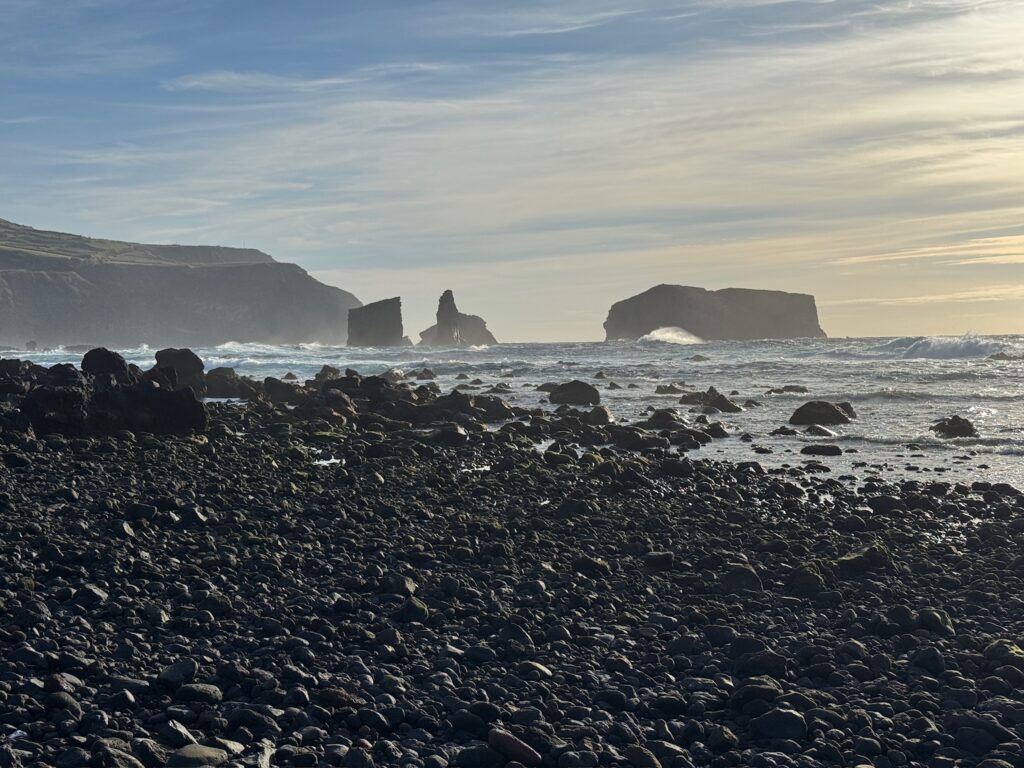
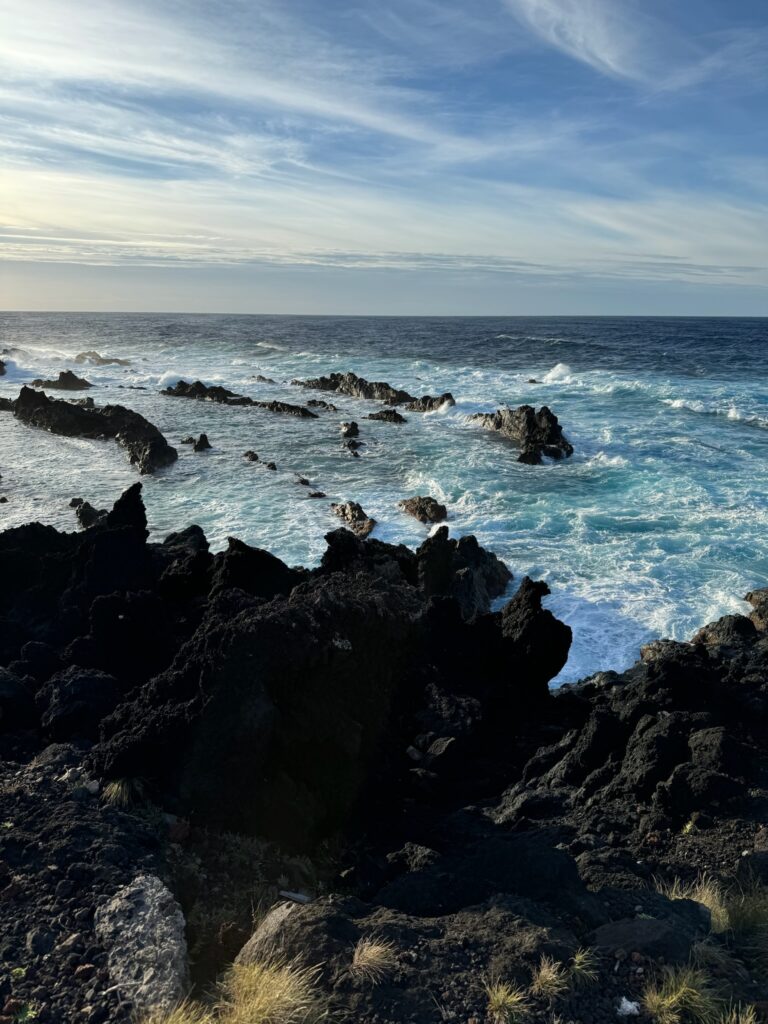
We decided to go local Italian for dinner at O Sole Mio in Ginetes. It’s maybe a 3/5 but could easily make itself a 5/5 if it did the same simple things we’ve seen missing elsewhere on this island a couple times: add spices, add salt. Now for health reasons some people have to watch salt intake, so we wouldn’t go crazy here. Having salt & piri piri (the Portuguese de facto hot oil) on the table would help a lot too. The pizza was excellent in every way except making the flavors pop. The lasagna couldn’t compete in our family, but it could be “very good” if it had herbs and spices. Savitri says the sangria was excellent. The service and the location were excellent. They even banned smoking in their tented patio area which is rare and highly appreciated!
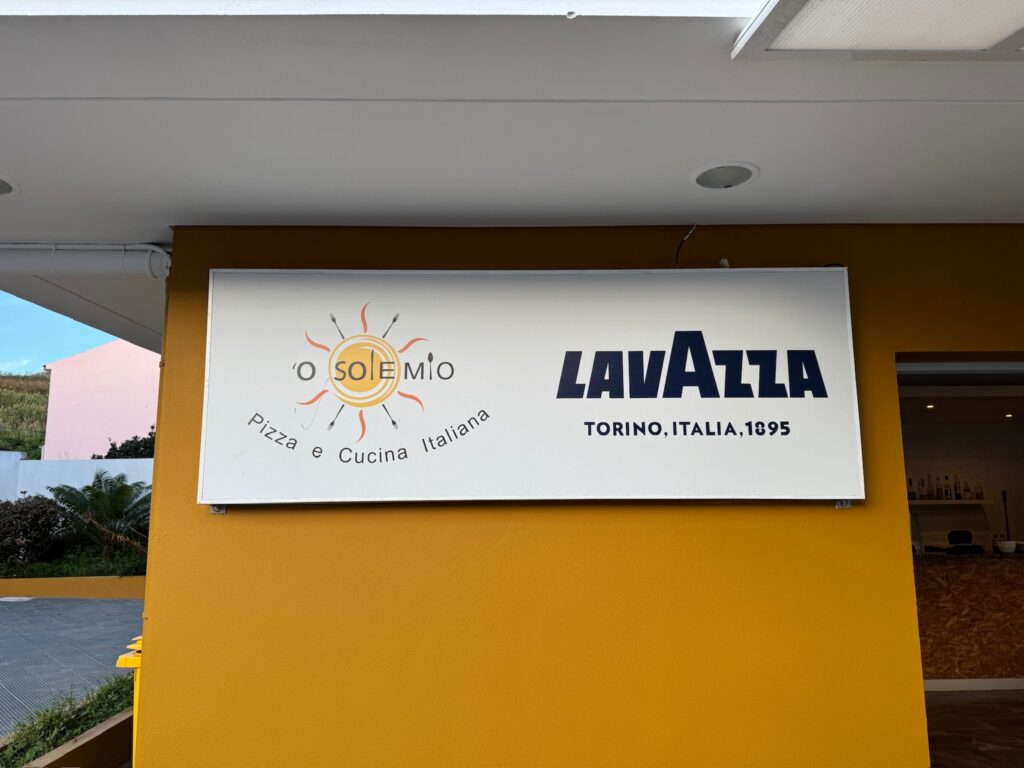


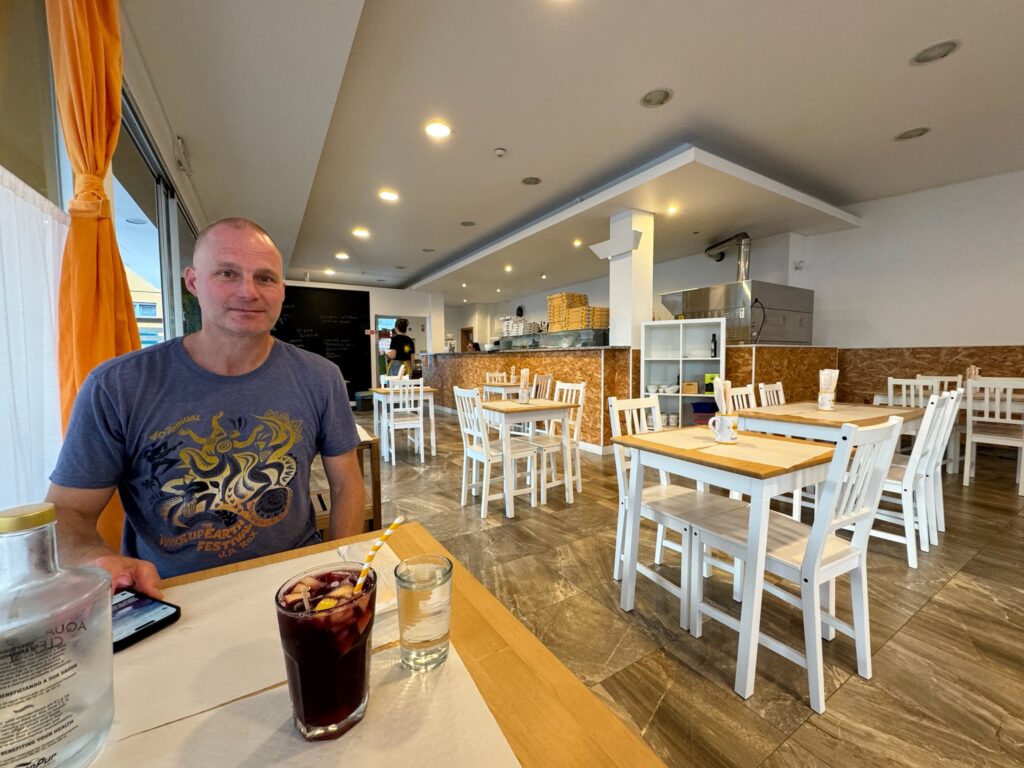
Leave a Reply to Jesse Cancel reply